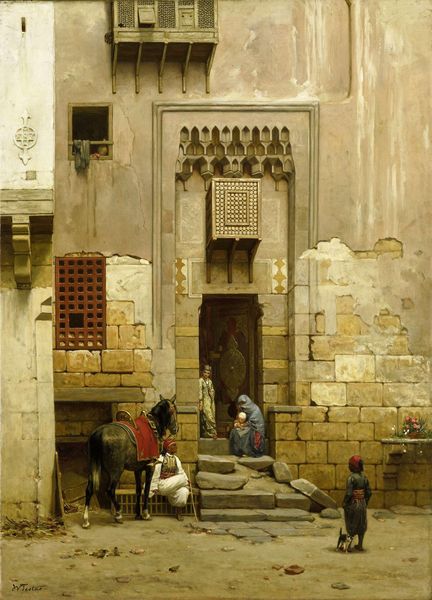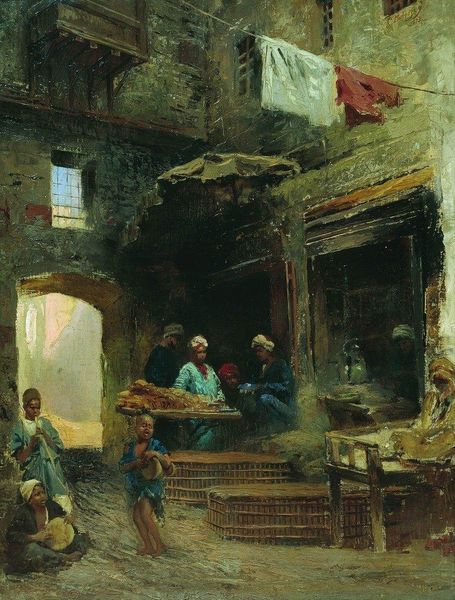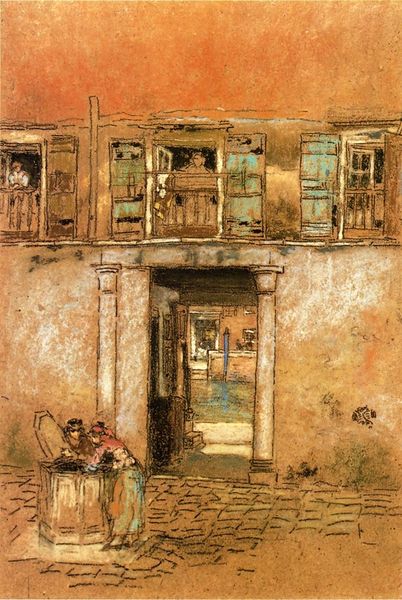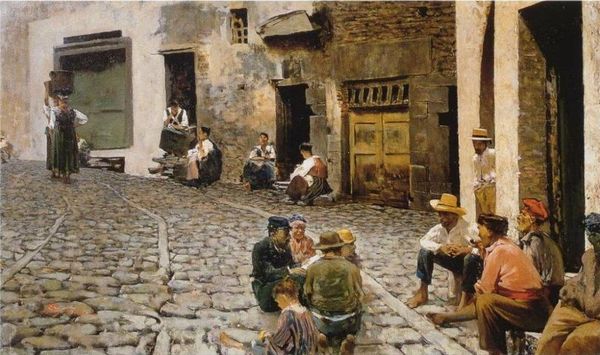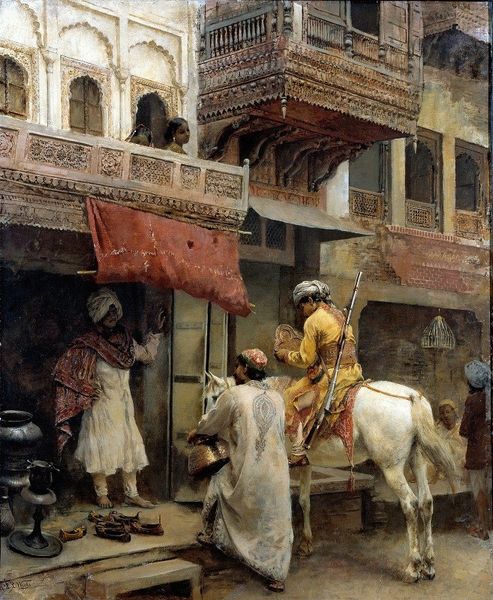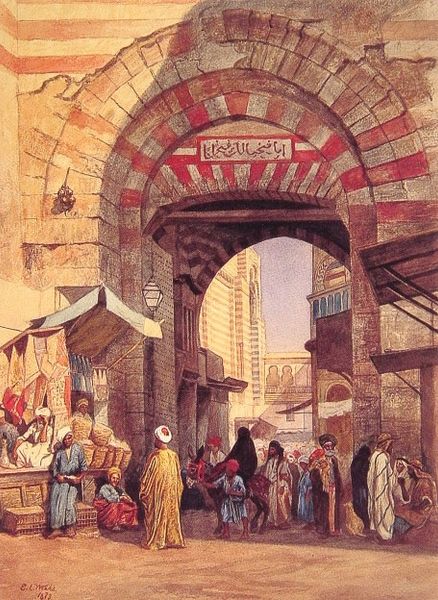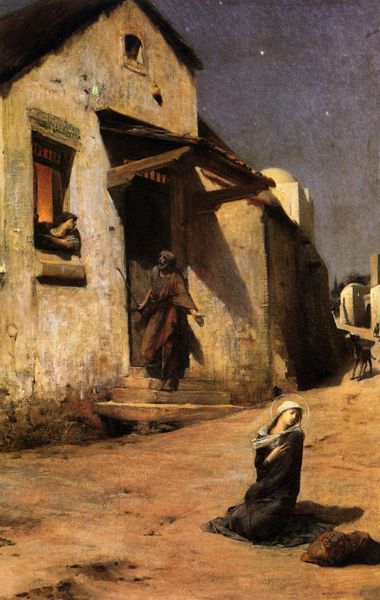
painting, oil-paint
#
portrait
#
16_19th-century
#
painting
#
oil-paint
#
oil painting
#
group-portraits
#
cityscape
#
genre-painting
#
realism
Copyright: Public domain
Editor: Aleksander Gierymski’s 1883 oil painting, "Gate in the Old Town," presents a very busy street scene. It's so crowded and somewhat shadowy. What visual clues do you notice? Curator: Immediately, the arched gate draws my eye. It’s not just a physical entryway, but a symbolic one, isn't it? Gierymski uses it to frame figures in different stages of life, almost archetypal roles - children, mothers, merchants, elderly... consider the signs hanging over the shops - "Groceries"... “M. Taszynska,” alongside the two crossed keys. Keys traditionally symbolize knowledge and access, but in this context, what kind of access do you think it suggests? Editor: Maybe access to services or goods…or just a physical place to live or trade? It seems everyday, but charged with history. Curator: Precisely. The entire setting, especially with its concentration of professions, feels like a visual shorthand for the cycle of life and work, bound by that gateway. What do you think the artist wanted to reveal to us about memory and continuity? Editor: I suppose it shows that these places accumulate the passage of many people's daily routines, so the shops and their symbols, though mundane, are really at the center of this community. They hold these historical layers and communal experiences. Curator: Exactly! And do you see how the artist sets up different narratives of social life outside each business to bring that idea into sharper focus? Editor: Now that you point that out, it makes the space seem less shadowy, and more alive, and even welcoming, due to these social ties. I hadn't considered how much weight the symbols carried! Curator: Indeed, an entry is not always only a passage! It could mean passage of memory or community identity!
Comments
No comments
Be the first to comment and join the conversation on the ultimate creative platform.

